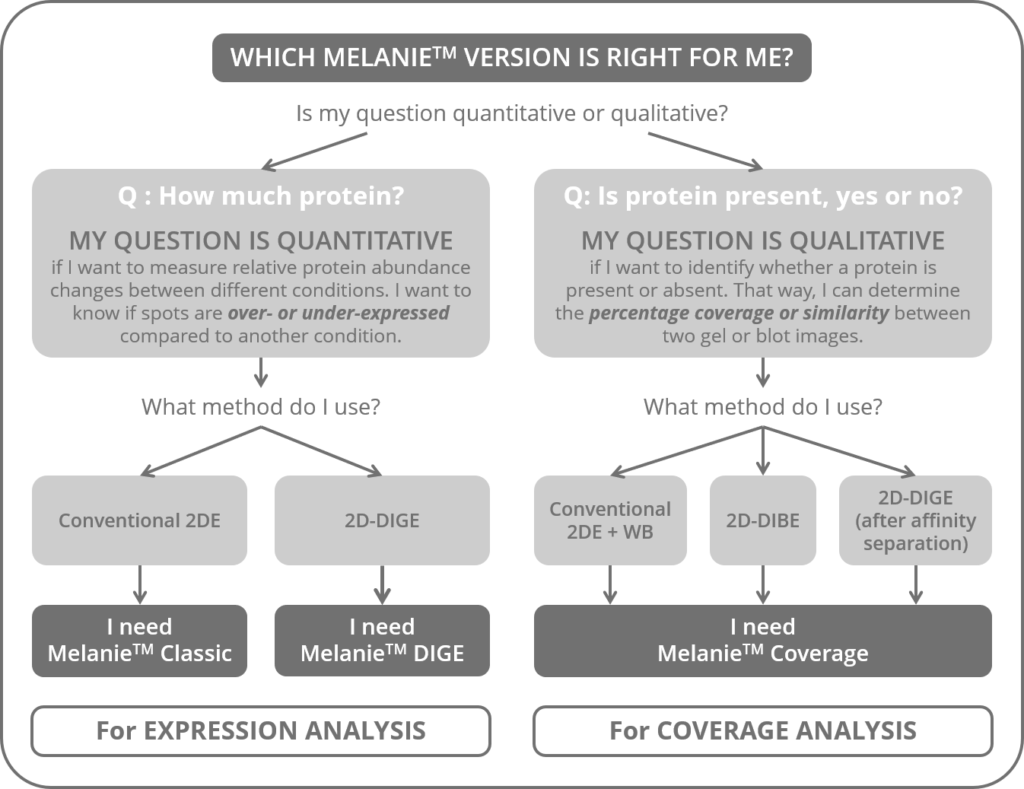Which MelanieTM version is right for me?
Looking for software to analyze your 2D gel or blot data? But not quite sure which of our MelanieTM modules is most appropriate for your application? It’s all about your research question – quantitative or qualitative – and the method used to run your experiment. Here’s a guide to find your ideal solution.
Quantitative or qualitative
First be clear on whether your question is quantitative or qualitative.
Your question is quantitative if you want to measure the relative protein abundance changes between different conditions. The question is about “how much protein” you have in each gel for a given spot. In a quantitative analysis, you normally want to use statistical tests such as t-test or ANOVA to tell whether the differences you observe are real or just due to chance. This requires biological replicates. The MelanieTM Classic and MelanieTM DIGE modules are dedicated to such differential protein expression analysis.
Your question is qualitative if you are interested in whether “yes or no” your protein is present on the gel. Qualitative analysis lets you calculate a percentage coverage. This is the percentage of spots on a total protein image “covered by”, i.e. also present on, an image that only detects certain spots such as immunodetected, phosphorylated or glycosylated proteins. Alternatively, you can determine the similarity between images. The MelanieTM Coverage module is dedicated to coverage and similarity analysis.
Method
If your research question is quantitative, then there are two options:
- You run conventional, single stain 2D gels. In this case, our MelanieTM Classic module will fit your purpose.
- You run 2D-DIGE experiments. You will value the MelanieTM DIGE version that fully exploits the advantages offered by multiplexing. In particular, the high statistical confidence and reliability resulting from the use of an internal standard. Note that MelanieTM DIGE includes all the features of MelanieTM Classic.
If your research question is qualitative, then MelanieTM Coverage is exactly what you need, independently of the 2D-PAGE based method used. MelanieTM Coverage supports:
- Conventional 2D gel electrophoresis followed by 2D Western blotting (WB)
- 2D differential in blot electrophoresis (2D-DIBE)
- Antibody affinity separation followed by 2D differential in gel electrophoresis (2D-DIGE)

